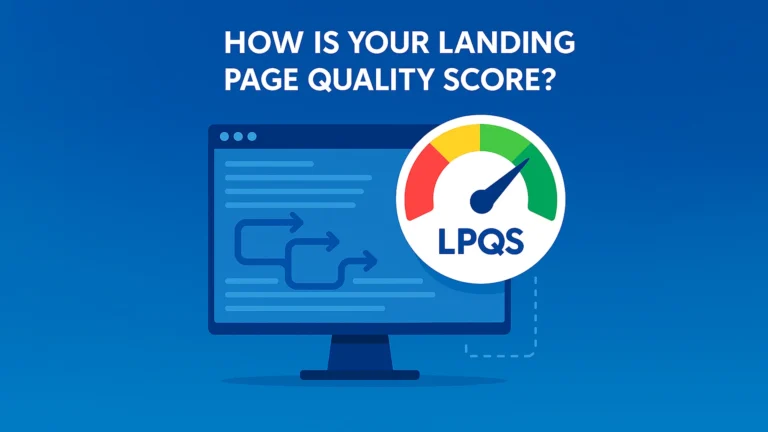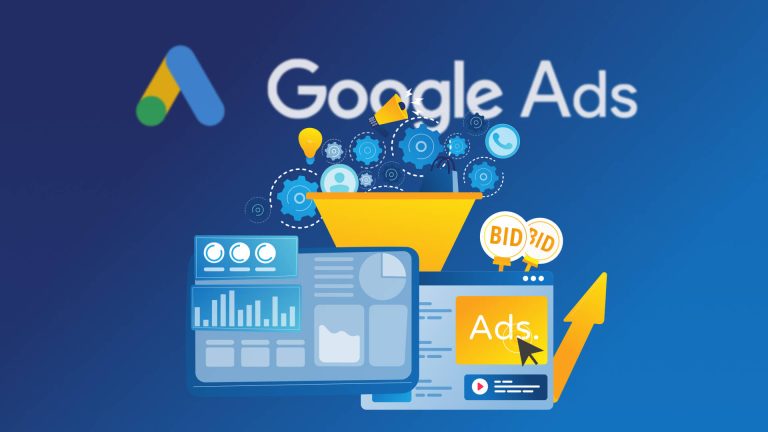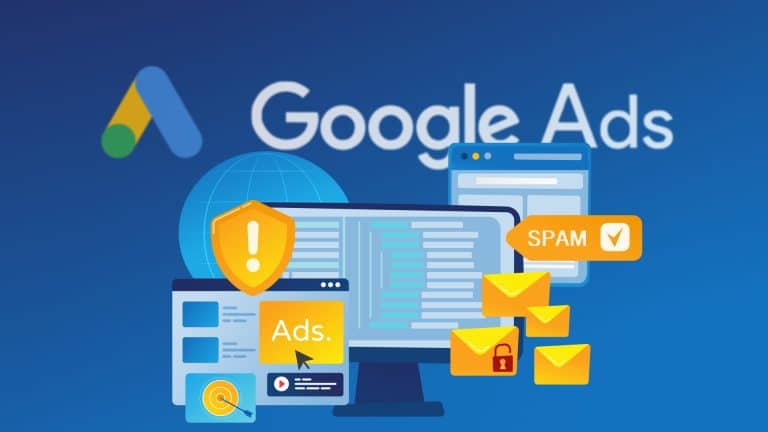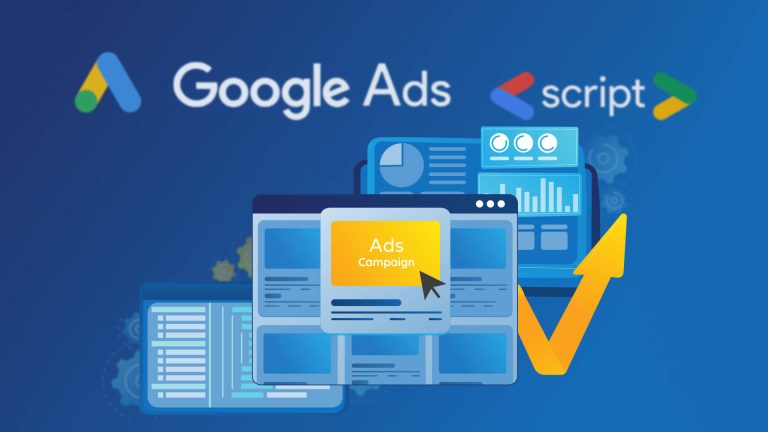Based on the discussion on LinkedIn, I thought it was time to make a summary of the components we know about Google’s Quality Score (QS). It’s a black box, but luckily, some documents are available because of the DOJ Antitrust Trial, which brings some insights. Let’s have a look! I’m referring to a document from January 2008; yes, it’s old, and some changes to the minimum bids have been made. However, the basic principles of the Quality Score should still be the same.
Breaking down Quality Score: QS1 and QS2
There is more than just one Quality Score available. Google calls it Quality Score 1 and Quality Score 2. But what does it mean? QS1 determines the keyword’s minimum bid, and QS2 influences the keywords’ ad position.
Impact factors of Quality Score 1
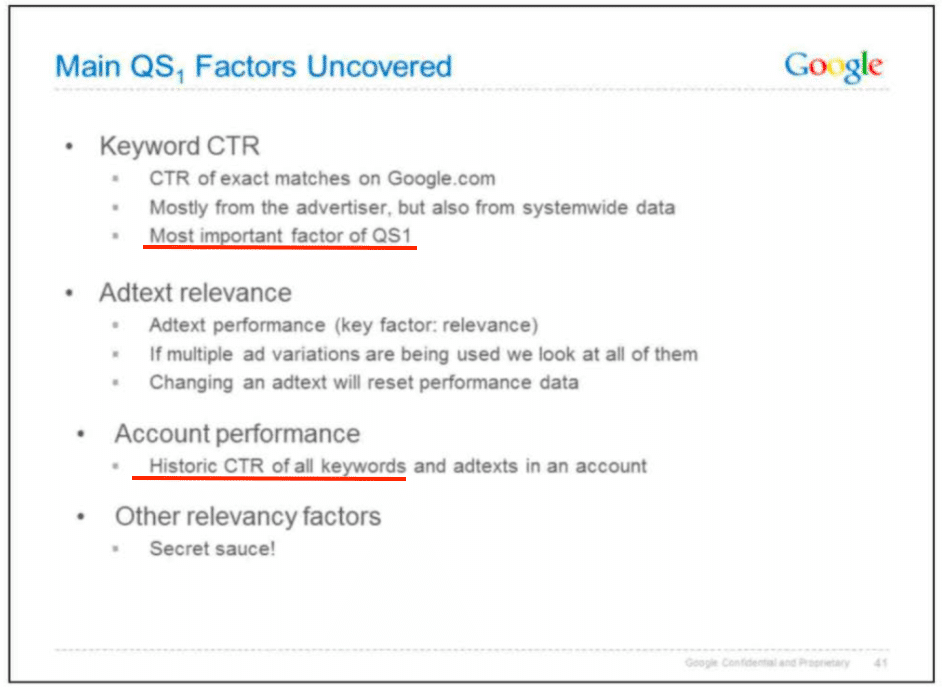
Normalized keyword CTR is king
Google considers the CTR of the exact matches to your keyword as the most important factor. What does it mean? First, match type does not matter — the QS1 is the same for a broad, phrase, or exact match. Important: The CTR on the keyword level you can see in the account is not the number used for deriving the QS1. The CTR has to be always normalized by position. Many people got that wrong in the past with advice like “bidding more will increase your CTR and raise your Quality Score.” The normalized CTR of your keywords is the most essential factor.
Ad text relevance
Your ad should be relevant to the keyword you’re targeting. This sounds simple, but it’ll also impact your CTR in most cases. Interesting info: The performance data is reset whenever you change an ad text. This means: Losing that history can bring down your Quality Score.
Normalized account CTR
That is an interesting component because numbers told me the same thing 10 years ago: We monitored the normalized CTR across all keywords for each account. This value impacted the distribution of the Quality Scores shown in the account on the keyword level. Changing the normalized account CTR impacted the Quality Scores of all keywords.
Landing page quality
Google is aware that CTR can be manipulated. Landing Page Quality Score should cover the Quality from a different perspective. Google wants to prevent showing up high CTR ads that link to bad websites. And, it measures the relevancy of a landing page by a) its visible URL (measured by CTR like for keywords) and b) by crawling the URL. In the crawling process, the content is stored and analyzed. The landing page quality is added to the keyword-based quality score, resulting in QS1. What does this mean? When you have a poor landing page used by 10 different keywords, all of your keywords get penalized.
Impact factors of Quality Score 2
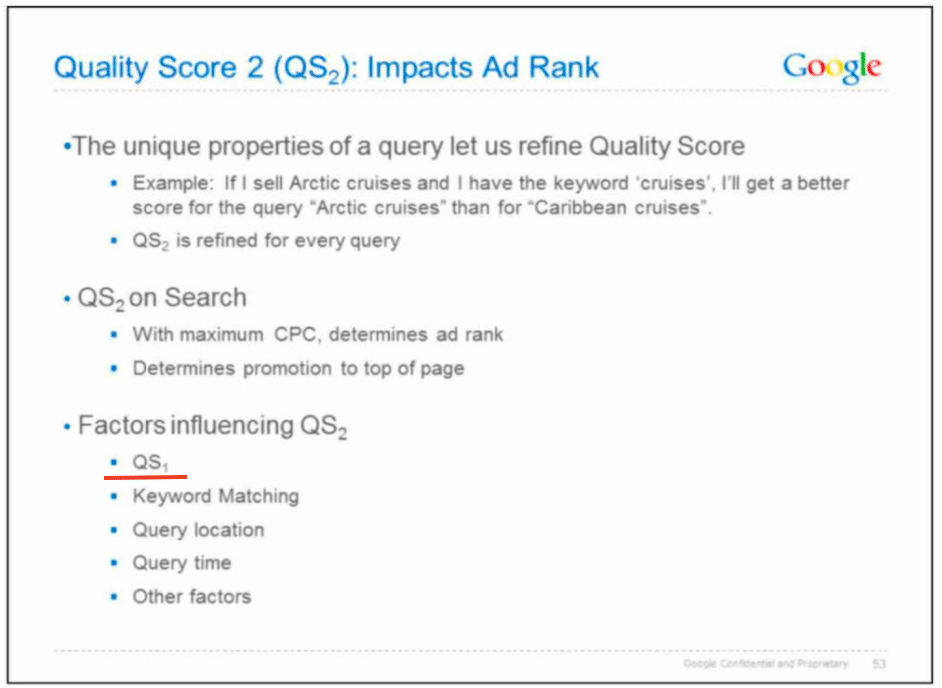
QS2 impacts the Ad Rank: If you multiply your Max CPC Bid with the QS2, you get the Ad Rank. Google calls the QS2 a refinement based on the properties of a query. The query string might be the same. However, Google will consider the query’s location, time, and other factors to handle it differently in terms of QS2. Another refinement is made for all keywords that do not match exactly: based on the matching similarity of your keyword vs. query vs. page inventory, the QS2 is impacted. Last but not least, QS1 impacts QS2, which is used in the Ad Rank calculation.
Why you should care about the Quality Scores: The calculated Ad Rank
With a higher Quality Score, you’ll pay less! QS1 impacts your Min Bid and directly impacts QS2, which will also impact the actual CPC you pay in the auction.
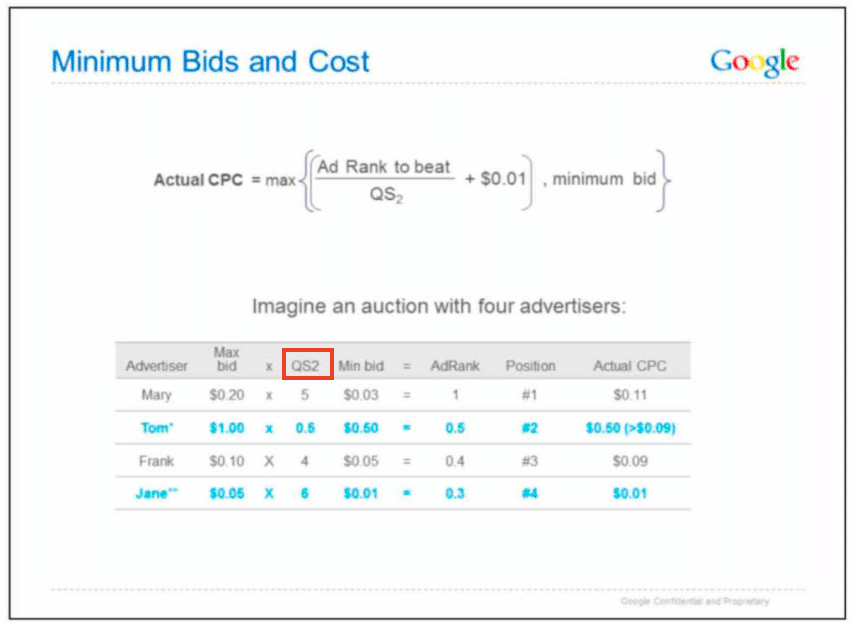
What are actions to improve your Quality Score?
Nice insights so far. But worthless without taking action. Based on the information from above, here is a list of things and actions I’m personally considering improving the overall Quality Score.
Measure the numbers impacting your quality score: normalized CTR on keyword level and account level
Google told us that the normalized CTR on the keyword level is the most important factor. Another component does the same on the account level. When these numbers start moving, we’ll see changes in the Quality Scores shown in the accounts after some weeks. Period. Having that perspective will also help you understand why 2 keywords with Quality Scores of 10 can be of different Quality under the hood (QS 10 vs. 20).
How do we normalize? Use the search term performance report for exact matches. Removing the actual positions in the reports makes normalizing the CTR more difficult. However, the impression share is still available for Absolute Top and Top, as well as the total impressions, which will enable you to define 3 “positions” and normalize the CTR accordingly.
Choose the right MCC structure — use multiple accounts
Considering that there is an overall account Quality Score based on the normalized CTR of all keywords, it might be a bad idea to mix up, e.g., your highly relevant money keywords with not-that-relevant generic search terms (that have a lot of search volume and below-average CTRs). You’ll pull your money keywords down, which is way more crucial for your business than pushing the generic / TOF keywords in Quality Score with your money keywords.
I would always split these cases into separate accounts. Oh, wait! There is the brand traffic. Guess where I would add those keywords. Of course, I would group them with the most important non-brand keywords to boost the account quality score with a strong brand CTR. This will also positively affect the Quality Score of the individual non-brand keywords.
Clean up keywords with poor relative CTR and low business impact
High impression keywords with low CTRs will pull down your account Quality Score, impacting all your keywords. It can be a good overall optimization to lose some conversions on those poor CTR keywords (even when the CPA is okay) to boost all other keywords in the Quality Score. Of course, you can also address that issue by organizing the different keywords “natures” in various accounts.
Ad testing: Search for CTR improvements
Okay. That’s obvious. Maybe the only important new thing is to run tests on ad copies so that the CTR is comparable between variants. Before/after performance will be pointless when you have different bid levels, which will give you different positions in the auctions and result in different CTRs.
Improve landing page quality
It’s also a no-brainer. When you perfectly catch the user intent coming from a Google search, e.g., if you use the keyword somewhere in the headline, this will help your conversion rates and the Landing Page Quality Score. Win-win.
The full Google PDF here: Ads Quality: From A-Z in 16 chapters.
